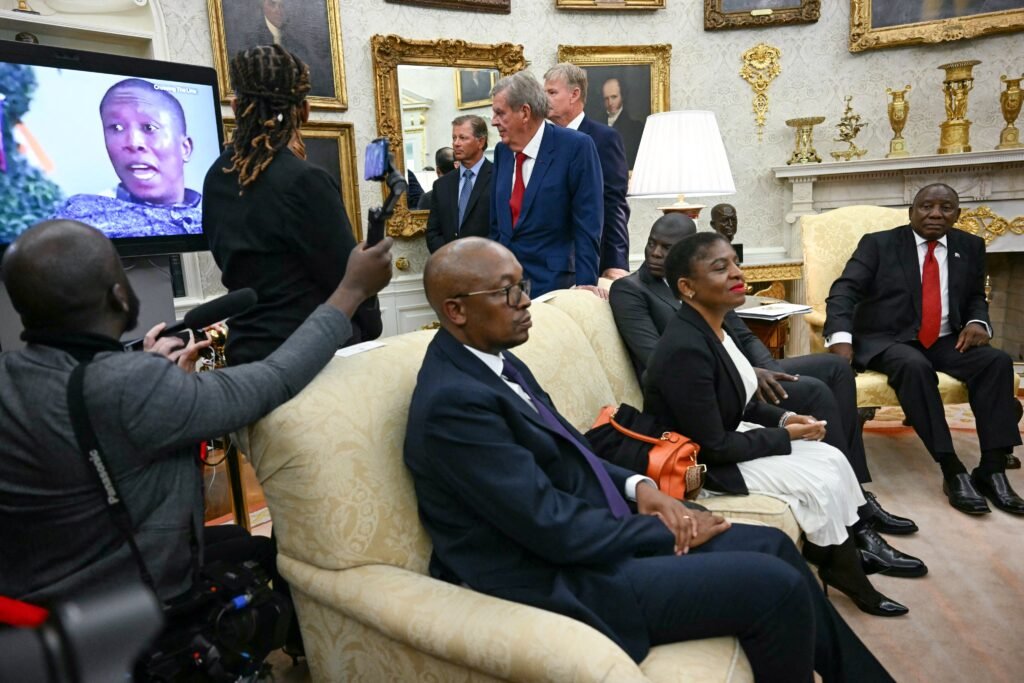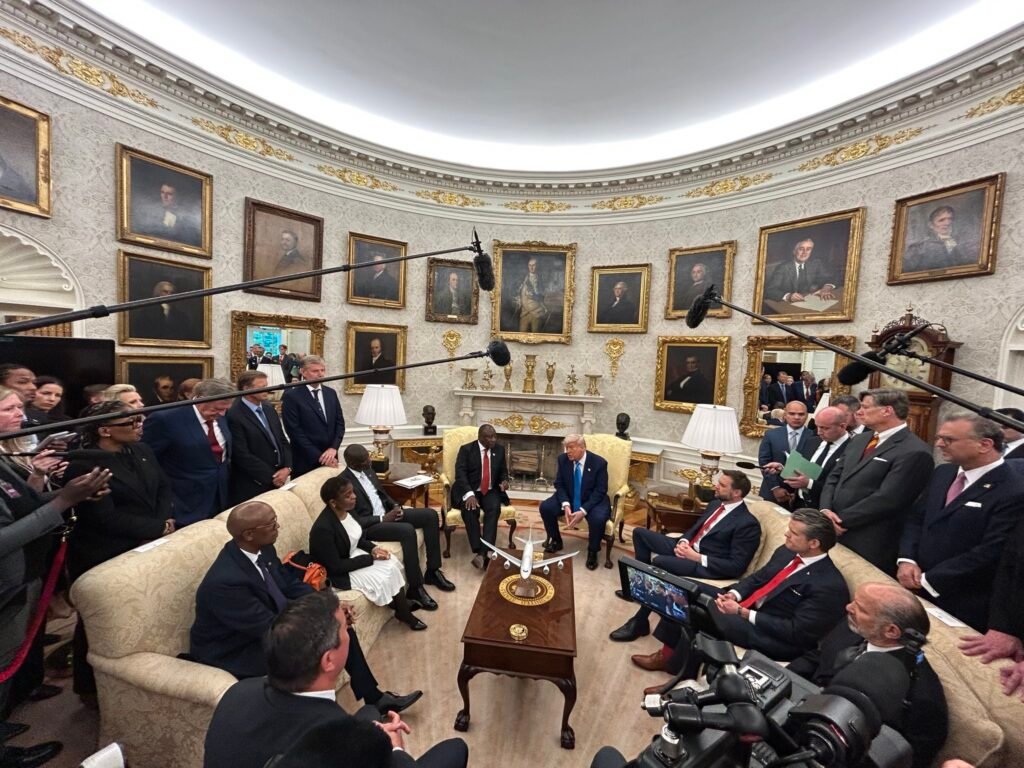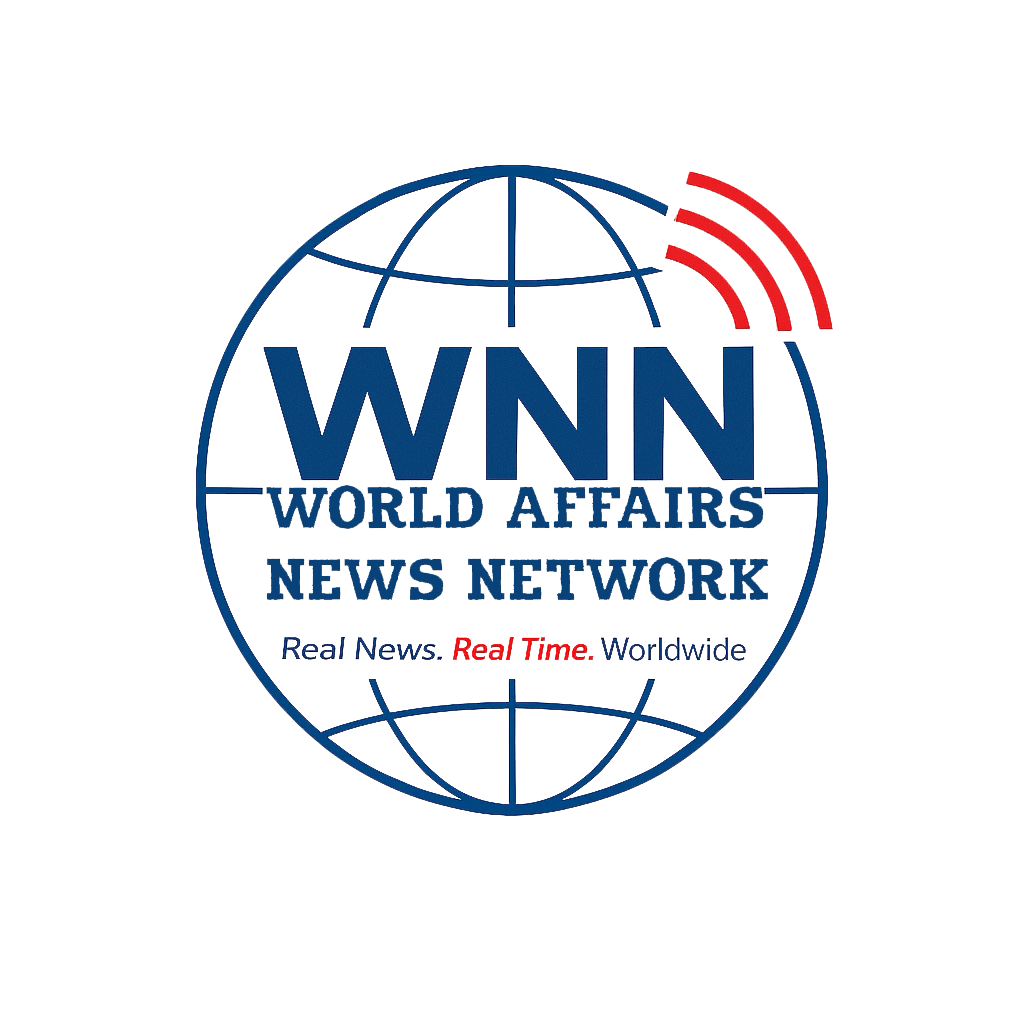WASHINGTON, D.C./ NEW DELHI: The Oval Office confrontation between U.S. President Donald Trump and South African President Cyril Ramaphosa on Wednesday laid bare not just a breakdown in diplomatic decorum, but a deeper ideological rift between a populist North and a post-colonial South. What was intended as a high-level meeting on trade and critical minerals quickly descended into a spectacle of racialized grievance, historical distortion, and strategic misrecognition.
The meeting began on a light note, with both leaders exchanging pleasantries over golf—a gesture underscored by the presence of South African champions Ernie Els and Retief Goosen. But the tone shifted sharply when Trump produced a video montage showing white crosses, which he claimed represented graves of white South Africans killed in a campaign of racial violence. He followed this with a stack of articles purporting to document “land seizures” and murders of white farmers.
“People are fleeing South Africa for their own safety,” Trump declared. “Their land is being taken, and in many cases, they’re being killed. This is a humanitarian crisis.” He further suggested that South African opposition politician Julius Malema should be arrested, a comment that drew visible discomfort from members of both delegations.

Ramaphosa, momentarily taken aback, maintained a calm demeanor. He clarified that while crime is indeed a serious issue in South Africa, the overwhelming majority of victims are Black, not white. “I have not seen these images before,” he said of the video. “But context matters. South Africa’s commitment to the rule of law and justice for all remains firm.”
At the heart of Trump’s allegations lies South Africa’s controversial land reform law, which allows for limited expropriation without compensation in cases where land lies unused and public interest is established. The law, passed in 2023, is a constitutional response to centuries of racial dispossession under colonialism and apartheid. Yet to date, no land has been expropriated, and all actions under the law are subject to judicial oversight.
Trump appeared dismissive of these legal safeguards. Interrupting Ramaphosa, he said, “The farmers are not Black.” Ramaphosa responded evenly: “These are concerns we are willing to talk to you about. But this is not about race. It’s about redressing historical injustice in a lawful and democratic way.”
The clash reflects broader tensions between the United States and South Africa. Trump has previously condemned Pretoria’s genocide case against Israel at the International Court of Justice and suspended U.S. aid programs. His administration expelled South Africa’s ambassador and controversially offered asylum pathways to white Afrikaners—moves Pretoria has labeled as racially motivated interference.
Yet Ramaphosa’s mission in Washington was pragmatic. With the United States as South Africa’s second-largest trading partner after China, he sought to preserve trade ties and shield Pretoria from Trump’s threatened 30% tariffs under the “Liberation Day” regime, which is currently on hold.
Efforts to steer the meeting back on track came from South African billionaire Johann Rupert, who acknowledged the country’s crime crisis but emphasized that the majority of victims are poor and Black. Turning to Elon Musk—Trump’s South African-born ally present at the meeting—Rupert suggested that Starlink satellite services could be deployed to bolster policing in rural areas, underscoring the need for technology-driven solutions over ideological confrontation.

What unfolded in the Oval Office was more than a bilateral spat. It was a vivid illustration of how divergent political cultures, historical narratives, and leadership styles can collide in a global arena increasingly shaped by misinformation and identity politics. Trump’s populist framing of South Africa as a site of anti-white persecution resonates with his base, but it risks alienating a continent striving for equitable engagement and recognition of its complex history.
For leaders like Ramaphosa, who represent constitutional democracies emerging from colonial trauma, the challenge is twofold: defending national sovereignty and reform agendas, while navigating a global order where perception often outweighs fact.
Wednesday’s exchange made one thing clear—the struggle for narrative power in international diplomacy is as consequential as the policies themselves. As the Global South asserts greater agency in reshaping the post-Cold War world, moments like this will increasingly define the fault lines between old paradigms of patronage and emerging demands for parity.
Follow Dr. Shahid Siddiqui on X: @shahidsiddiqui | WNN



















